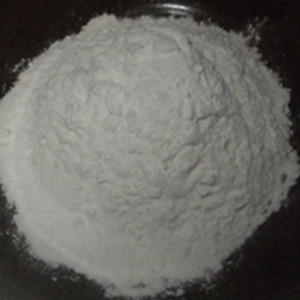
DEFINITION
Sodium Feredetate is iron(III) sodium ethylenediaminetetra-acetate monohydrate. It contains not less than 98.0% and not more than 102.0% of C10H12O8N2FeNa, calculated with reference to the dried substance.
CHARACTERISTICS
A yellow or yellowish brown, crystalline powder; hygroscopic.
IDENTIFICATION
A. The infrared absorption spectrum is concordant with the reference spectrum of sodium feredetate.
B. Ignite 0.5 g and allow to cool. Dissolve the residue in 2 ml of hydrochloric acid , add sufficient water to produce 20 ml and filter. The filtrate yields reaction C characteristic of iron salts. Dilute 1 volume of the filtrate to 10 volumes with water; the solution yields reaction B characteristic of iron salts.
C. Dissolve 2 g in 30 ml of water, slowly add 6.5 ml of a 20% w/v solution of potassium hydroxide, shake and filter the resulting suspension. Evaporate 8 ml of the filtrate to dryness, ignite and dissolve the residue in 4 ml of water. The solution yields reaction B characteristic of sodium salts.
TESTS
Acidity: pH of a 1% w/v solution, 4.0 to 6.5.
Free iron: Not more than 500 ppm when determined by the following method.
Dissolve 0.2 g in sufficient water to produce 20 ml and filter. Label three tubes A, B and C. Place 5 ml of the filtrate into each of tubes A and B and 4 ml of water and 1 ml of an iron standard solution prepared in the following manner in tube C. For the iron standard solution dilute 25 volumes of a 0.1726% w/v solution of ammonium iron(III) sulphate in 0.05M sulphuric acid to 200 volumes with water (25 ppm of Fe(III)). Add 1 ml of a 1.0% w/v solution of disodium catechol-3,5-disulphonate into each of tubes A and C and 1 ml of water to tube B. Measure the absorbance of solution A at 670 nm using solution B in the reference cell and of solution C using water in the reference cell. The absorbance of solution A is not greater than that of solution C.
Heavy metals: 1 g complies with limit test D for heavy metals 20 ppm.
Free sodium EDTA: To 4 ml of a 1.0% w/v solution add 2 ml of ferric iron standard solution (50 ppm) and 1 ml of a 1.0% w/v solution of disodium catechol-3,5-disulphonate and mix. Prepare a standard in the same manner using 4 ml of a 0.010% w/v solution of disodium EDTA in place of the solution of the substance being examined. Measure the absorbance of the solutions at 670 nm using water in the reference cell. The absorbance of the solution of the substance being examined is not less than that of the standard solution (1%).
Sulphates: Dissolve 2 g in 40 ml of water, add 5 ml of a 20% w/v solution of sodium hydroxide and sufficient water to produce 50 ml, shake and filter. Evaporate 6.2 ml of this solution to drynessand ignite until no trace of carbon remains. Cool and dissolve the residue in 10 ml of distilled water. Neutralise the solution with 2M hydrochloric acid using litmus paper as external indicator and add 2 ml in excess. Boil the solution, cool, dilute to 15 ml with distilled water and filter. The filtrate complies with the limit test for sulphates 600 ppm.
Loss on drying: When dried over silica gel at 120C at a pressure not exceeding 2 kPa for 5 hours, loses 4.0 to 13.5% of its weight. Use 1 g.
ASSAY: Dissolve 1 g in 40 ml of water in an iodine flask, add 20 ml of hydrochloric acid and 3 g of potassium iodide, close the flask and allow to stand for 5 minutes. Titrate the liberated iodine with 0.1M sodium thiosulphate VS using starch mucilage as indicator. Repeat the procedure without the substance being examined. The difference between the titrations represents the amount of sodium thiosulphate required. Each ml of 0.1M sodium thiosulphate VS is equivalent to 36.71 mg of C10H12O8N2FeNa.